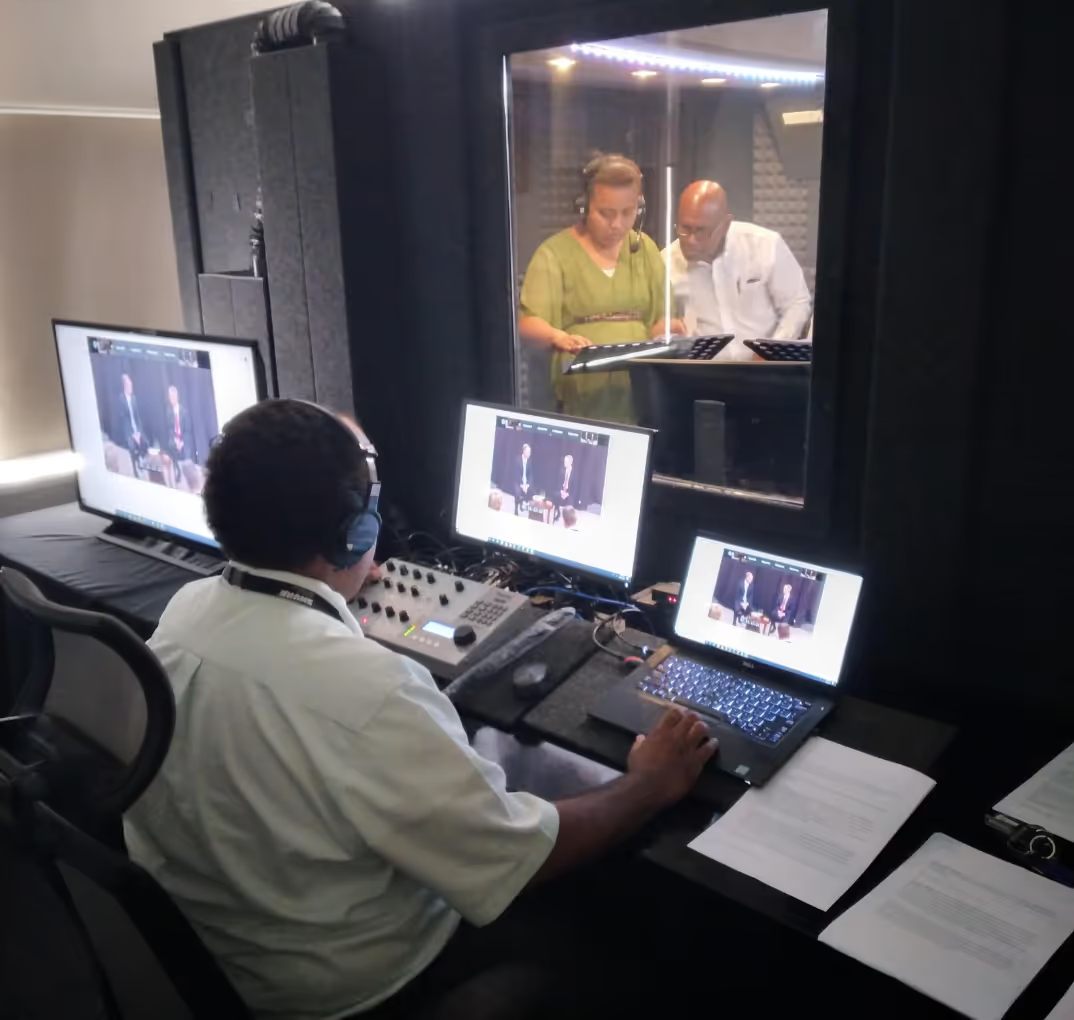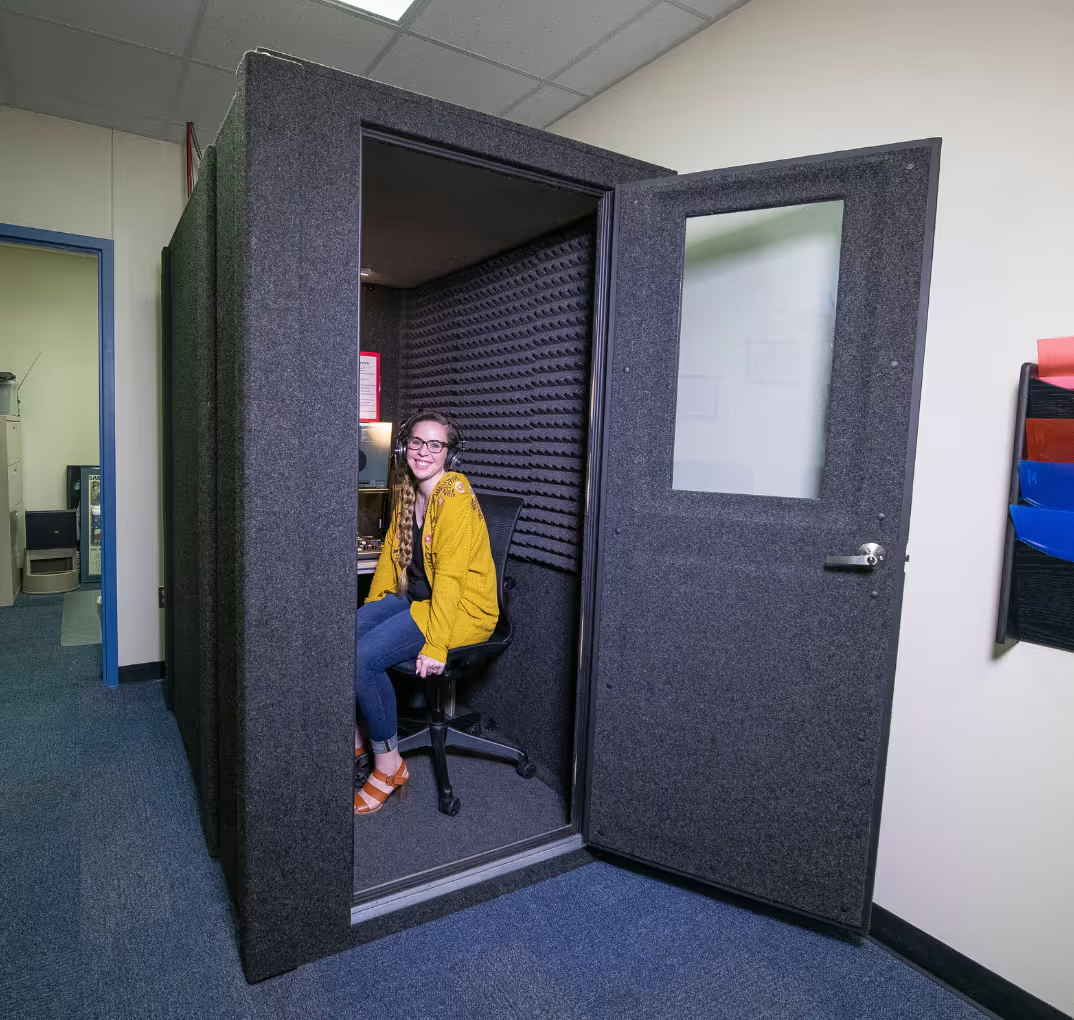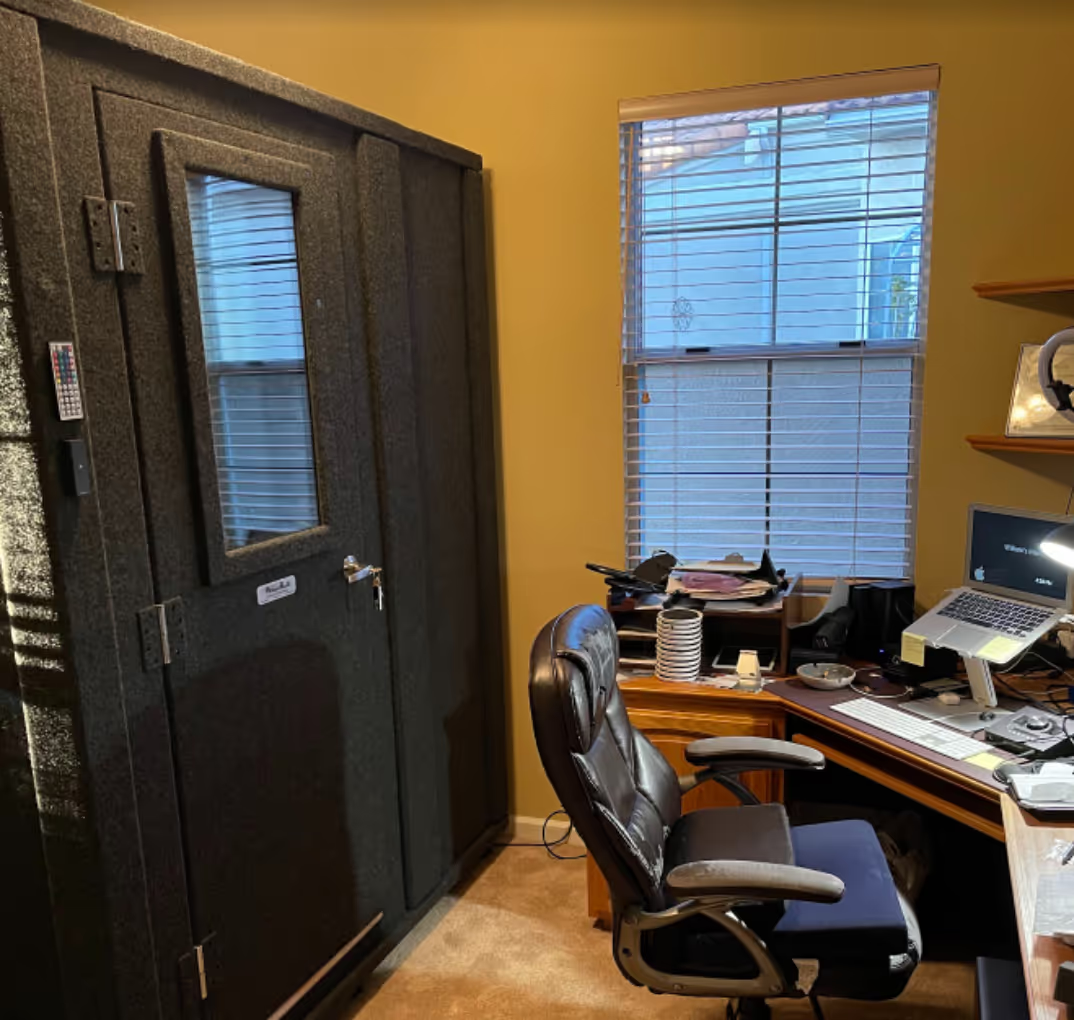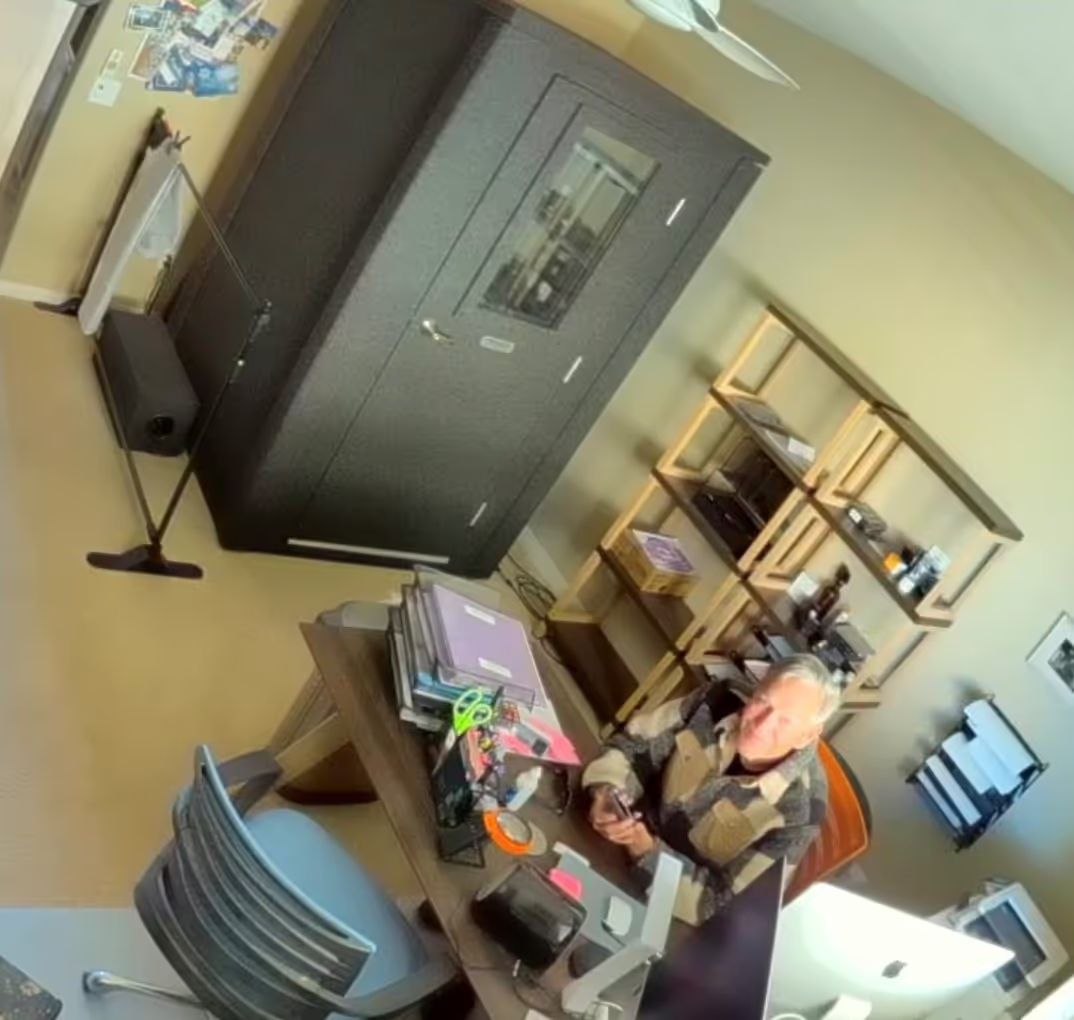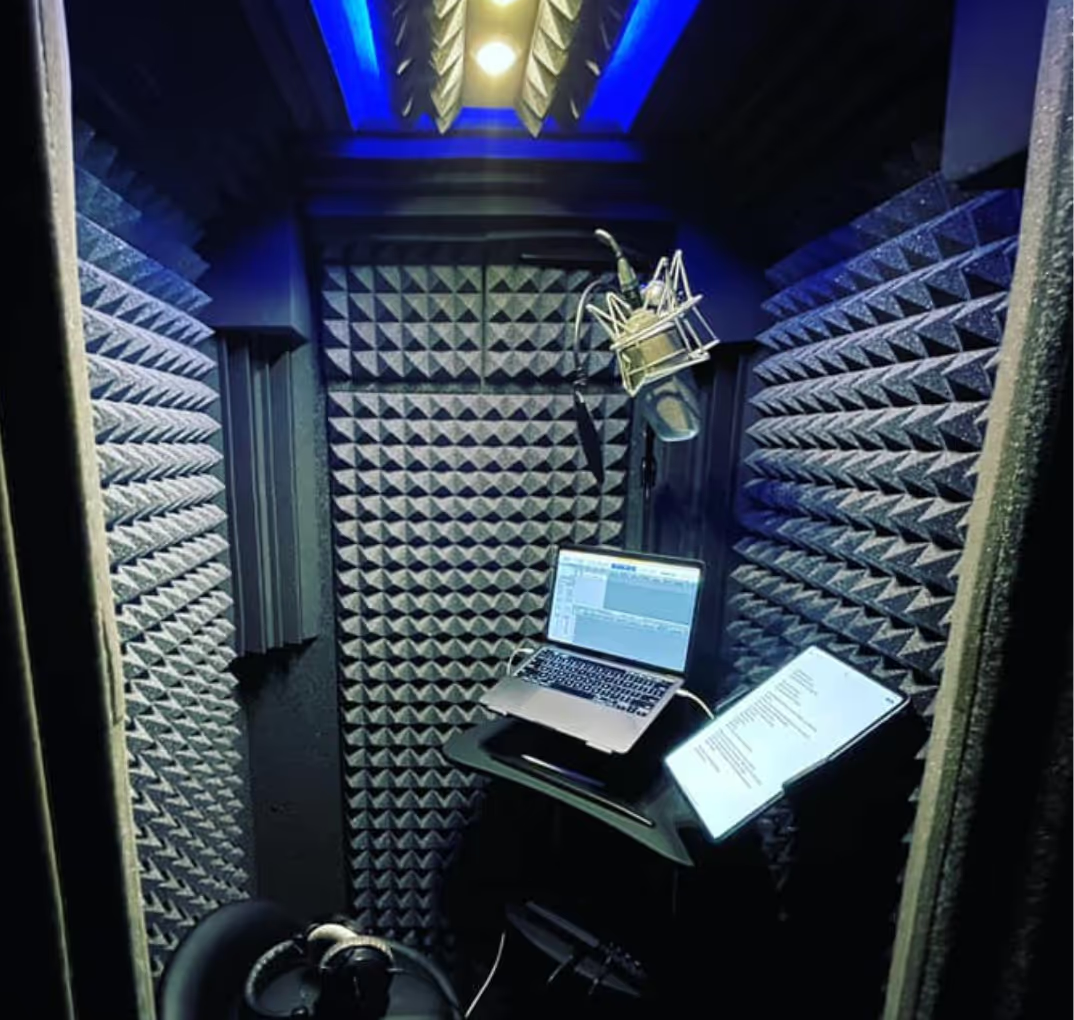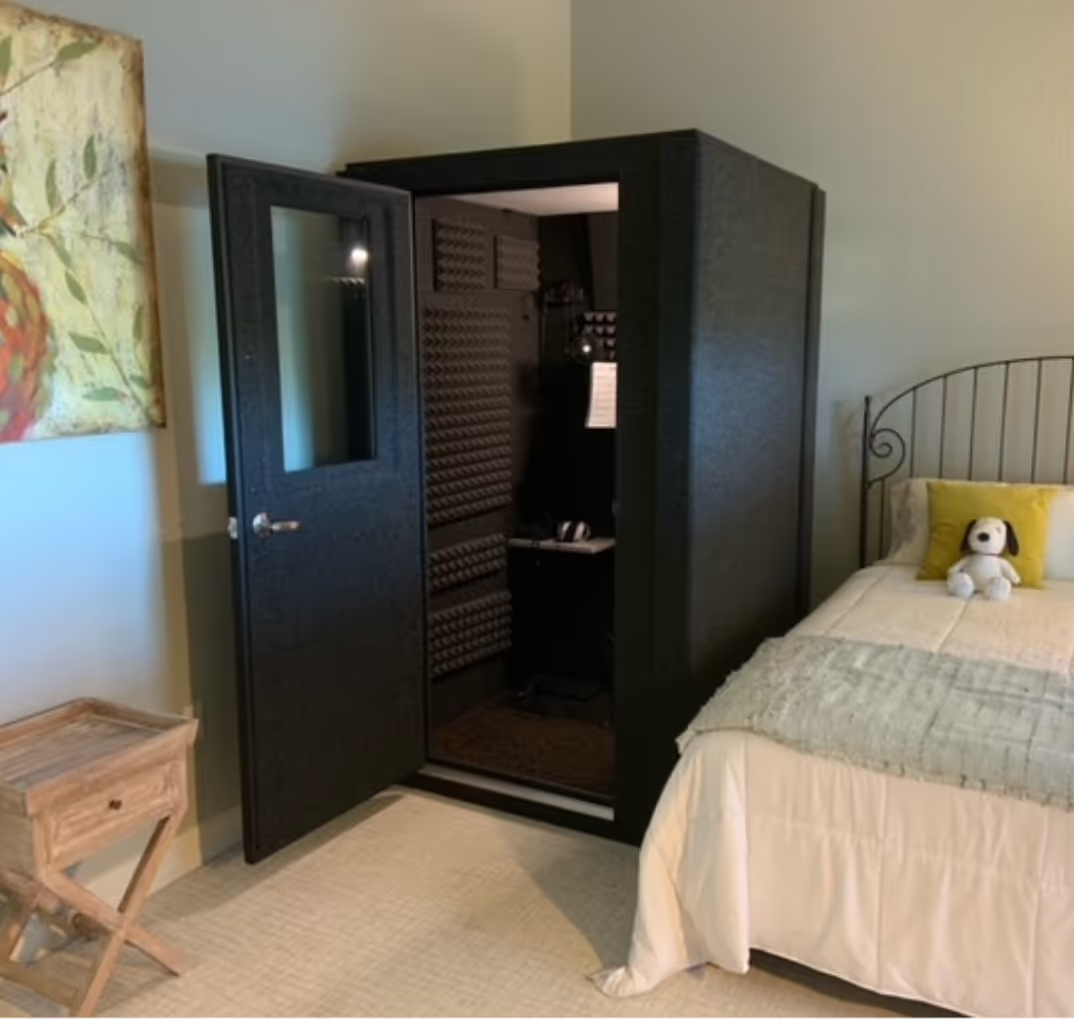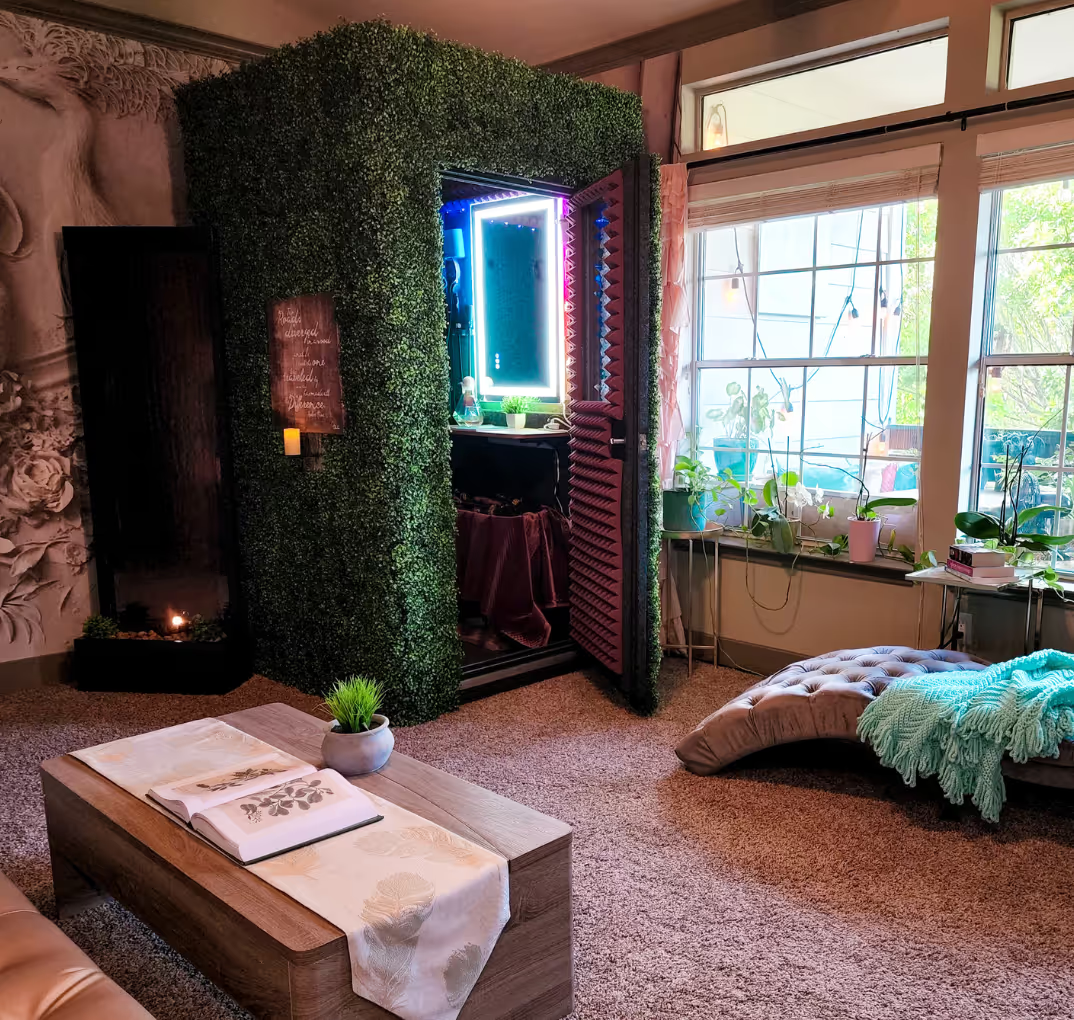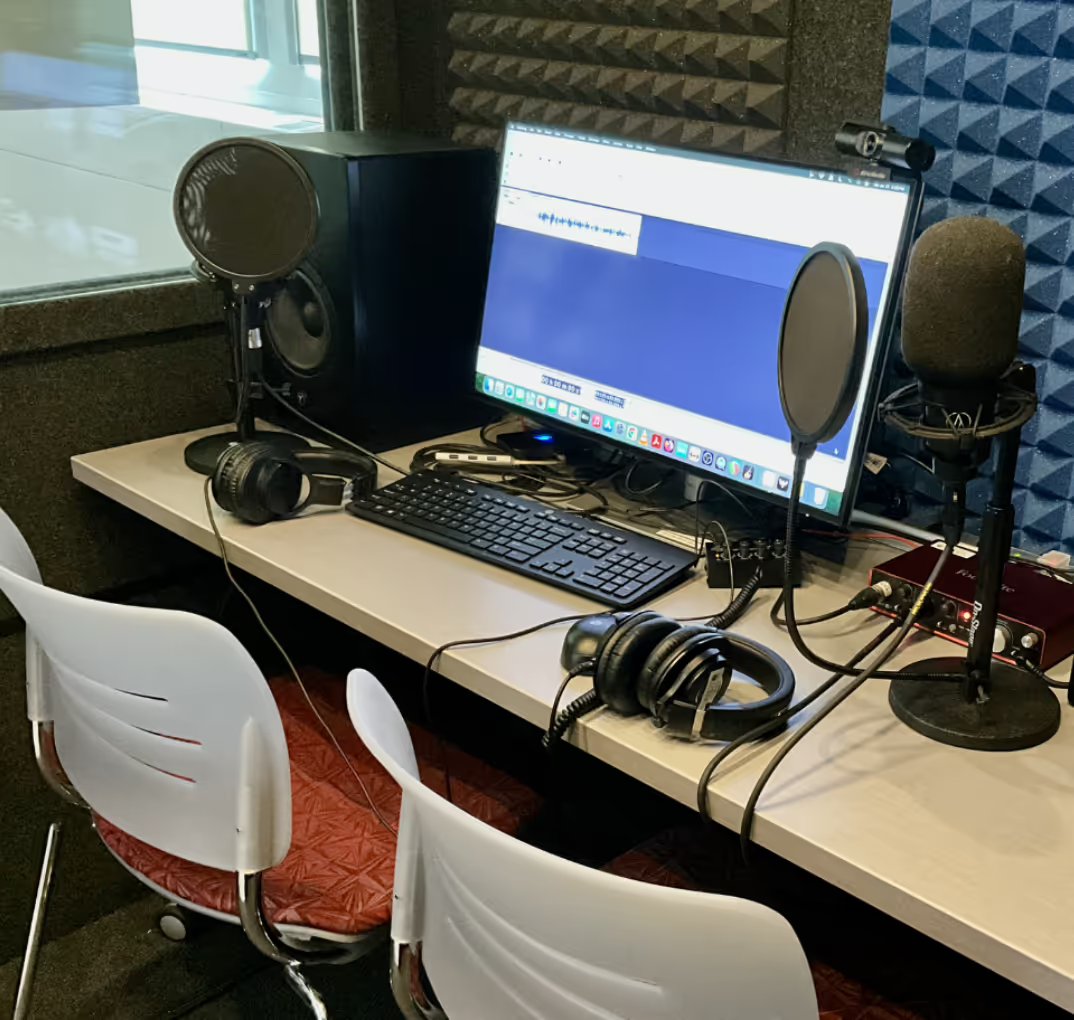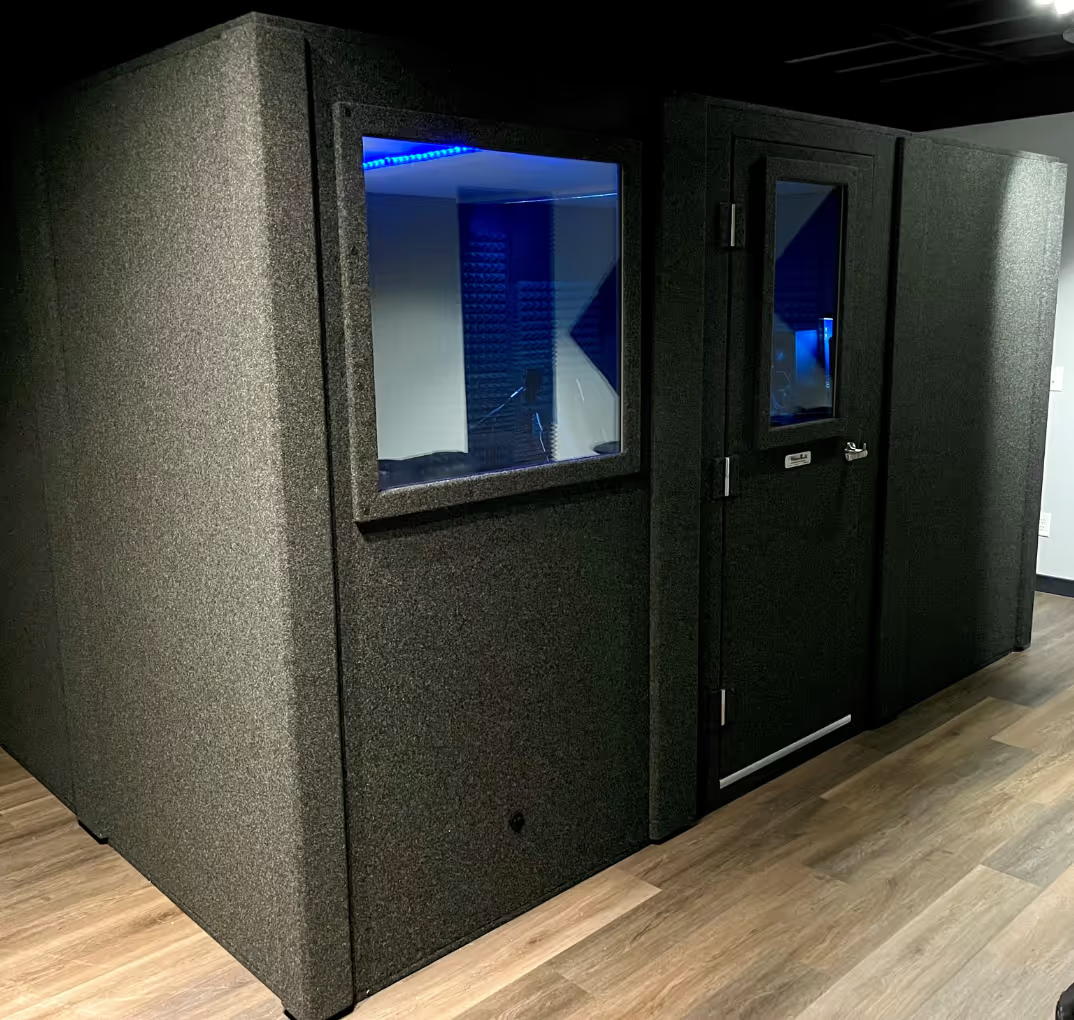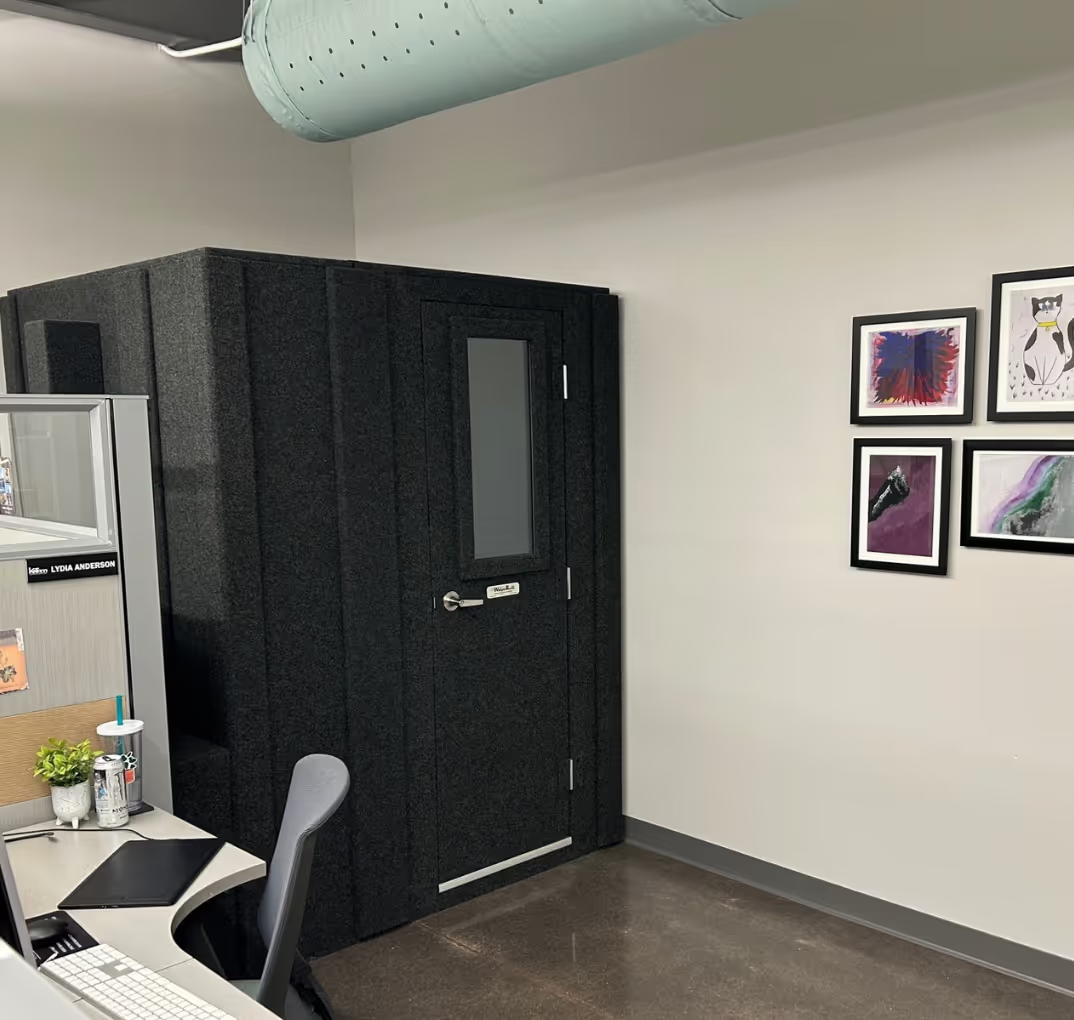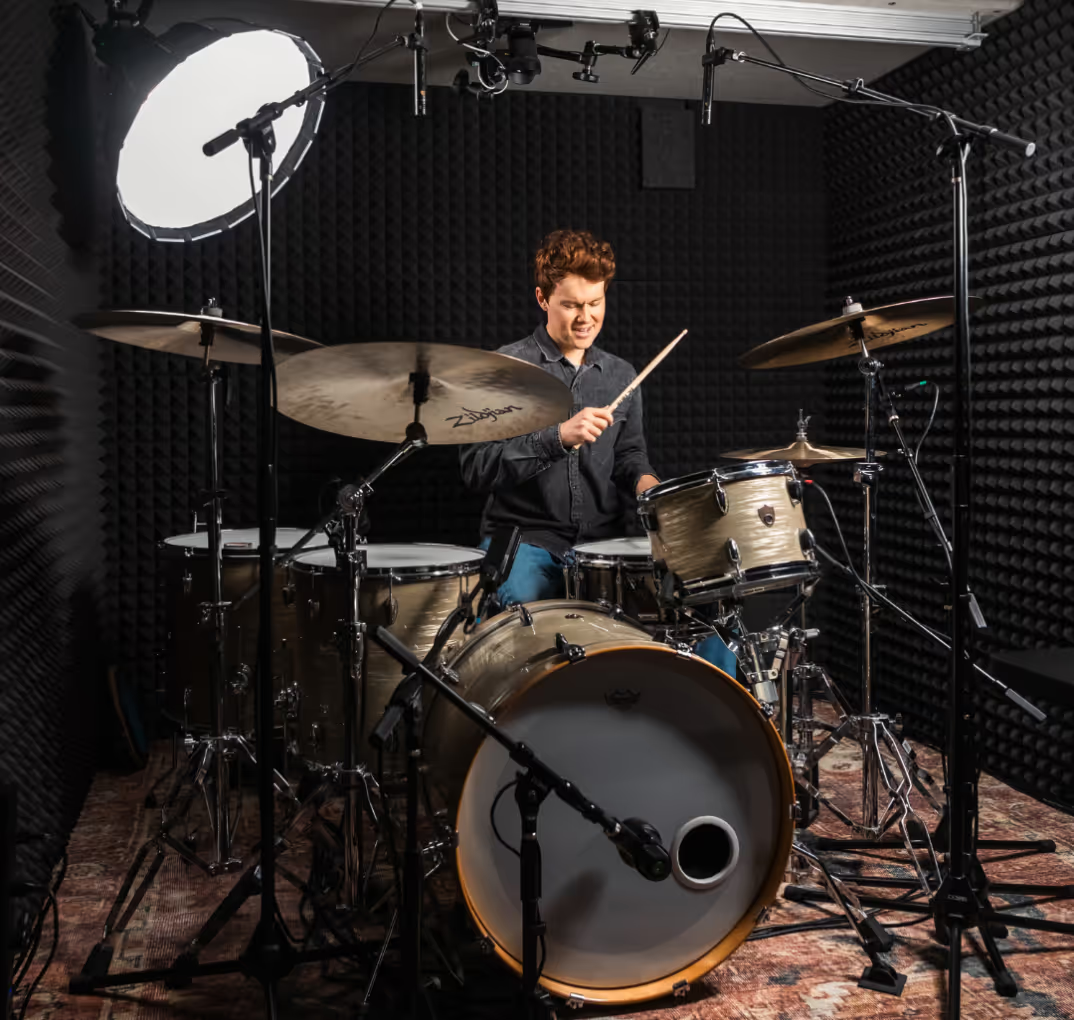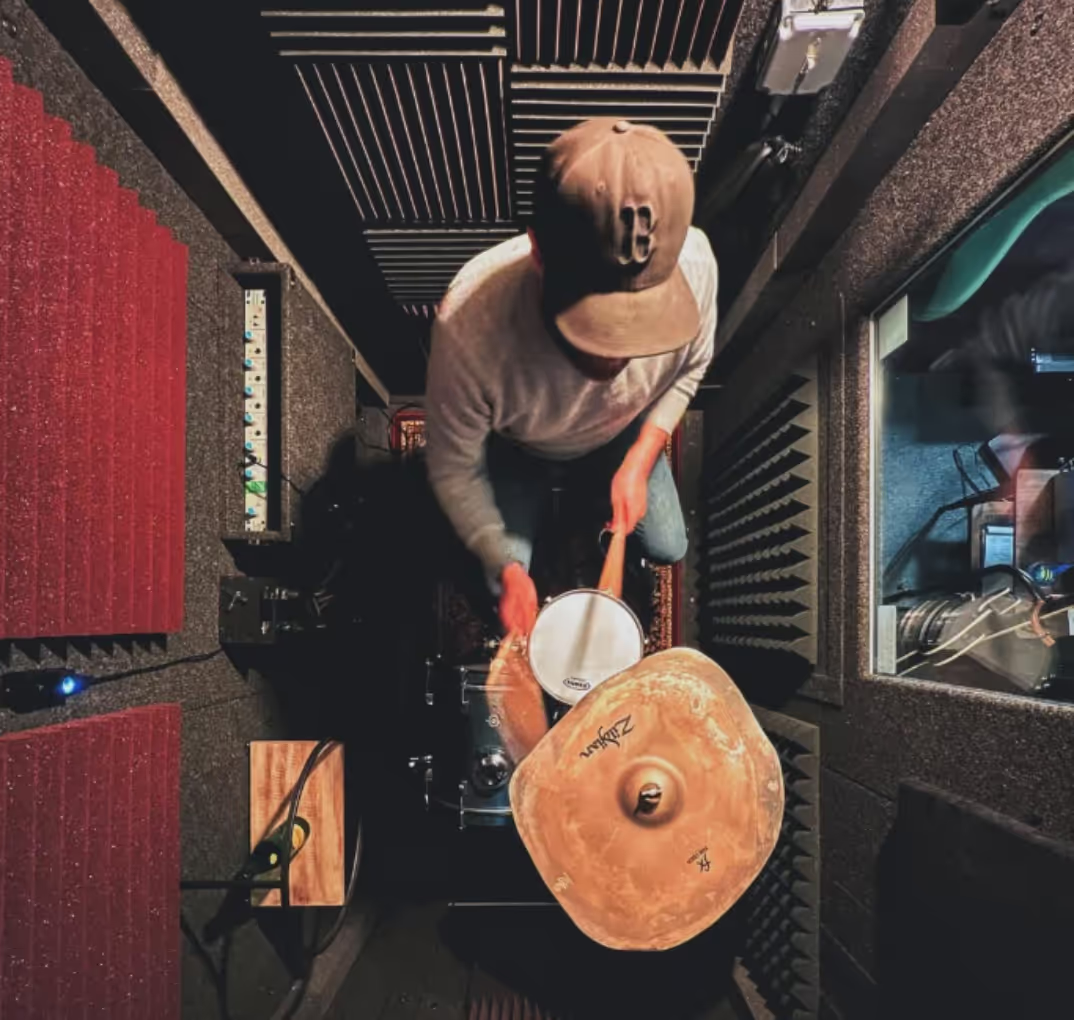🎯 Quick Take: A sound-isolated vocal booth gives you the right space — now it’s about choosing the right gear. Whether you’re building your first voice over setup or upgrading your existing workflow, here are 7 essential pieces of equipment VO artists rely on to record clean, professional audio inside a WhisperRoom.
Already have a WhisperRoom? Here's what you'll need to complete your voice over studio setup.
Your Guide to Building a Complete Voice Over Setup
You’ve invested in a WhisperRoom to create a quiet, controlled acoustic space — the foundation of professional voice over work. But great sound requires more than just the right room.
Choosing the right equipment is just as important. From microphone selection to software tools, each piece of your setup plays a role in capturing the best possible performance.
There’s no single “perfect” gear list — personal preference and budget always factor in. But this practical checklist covers the essentials that most voice over artists use to get started and to sound their best.
1. Audio Interface
Why do I need an audio interface for voice over work?
An audio interface connects your microphone to your computer and converts sound from analog to digital. It’s the bridge between your voice and your recording software. The interface also provides the power needed for condenser microphones and offers higher-quality preamps than most built-in sound cards.
Key features to look for:
• High-quality preamps
• Phantom power (for condenser mics)
• Number of inputs
Popular gear tip: Widely used interfaces for VO include the Focusrite Scarlett Collection (excellent value and reliability) and Universal Audio Apollo Collection (high-end sound with onboard DSP processing).
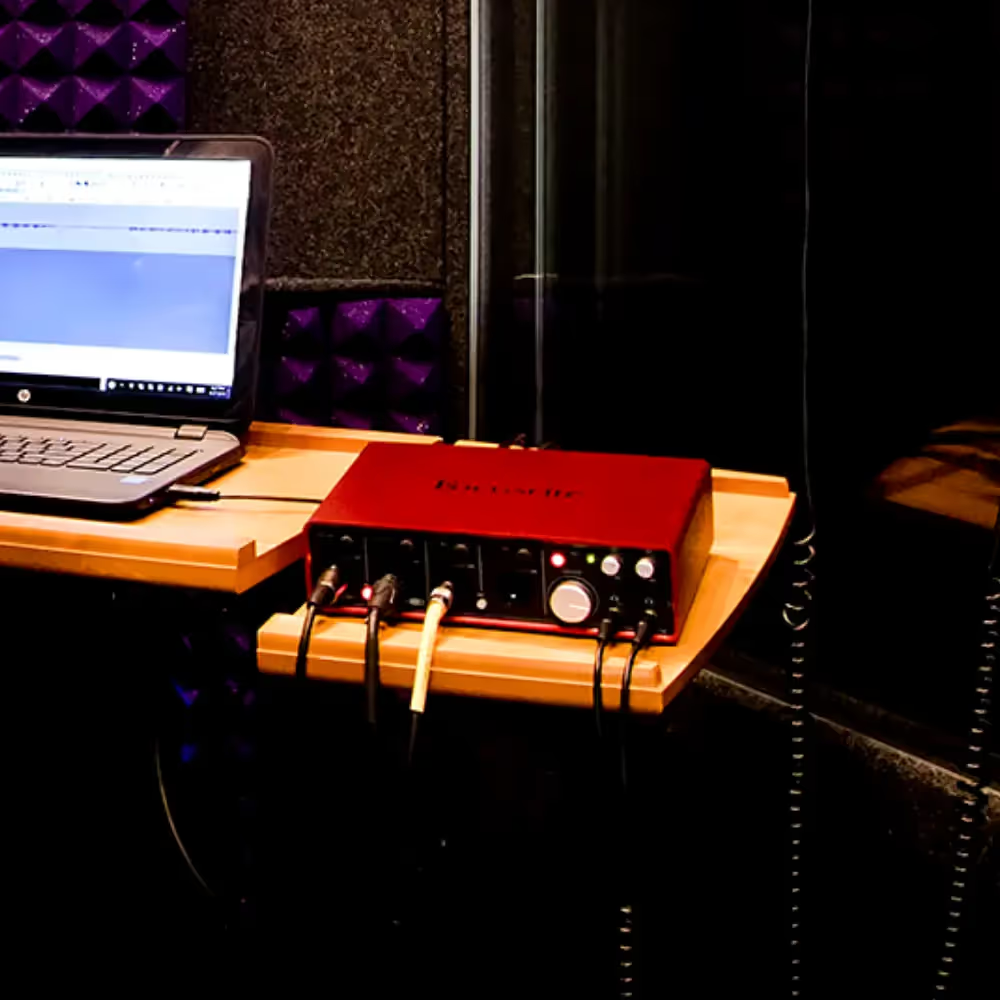
2. Condenser Microphone
What type of mic captures the best voice over sound?
Condenser microphones are the go-to choice for voice over because they capture vocal tone and detail with clarity and warmth. They offer sensitivity and range that dynamic mics usually can’t match.
Key features to look for:
• Cardioid polar pattern (rejects room noise)
• Low self-noise
• Natural, flattering vocal tone
Popular gear tip: Many professional VO artists rely on Neumann for its pristine high end sound, while Audio-Technica offers excellent versatility at a more approachable price point.

3. Pop Filter
How can I reduce unwanted pops and plosive sounds?
A pop filter reduces harsh plosive sounds (like “P” and “B”) that can distort your recording. Mic technique matters too: keep a consistent distance and angle to naturally reduce plosives. Combined with a pop filter, this will help you get clean vocal tracks.
Key features to look for:
• Durable frame
• Effective plosive reduction
• Flexible mounting arm
Popular gear tip: Stedman Proscreen Pop Filters are a favorite among VO pros for its durability and performance, while On-Stage is a great budget-friendly option.
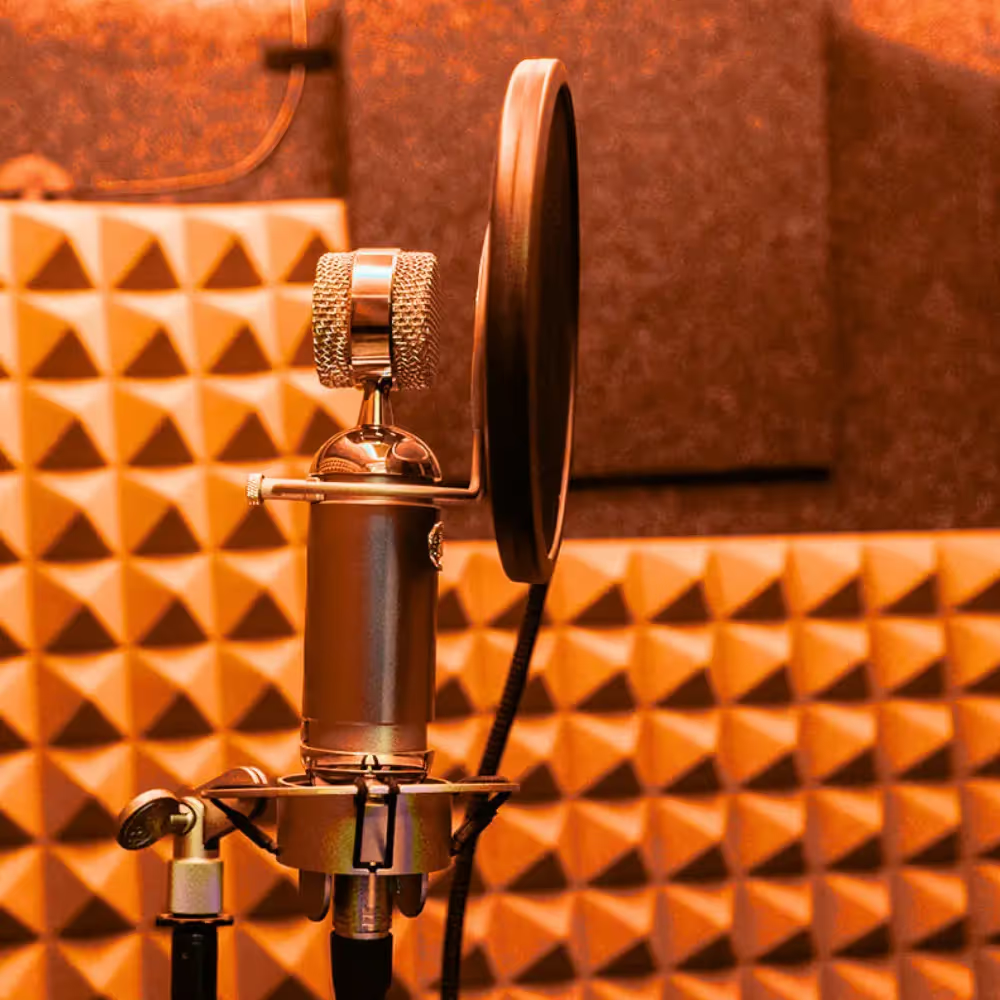
4. Mic Stand
Why does mic placement matter so much?
Holding your mic securely in place helps you maintain a consistent sound. Whether you’re sitting or standing, a stable stand makes a big difference. A shaky or poorly positioned mic can easily ruin an otherwise good recording.
Key features to look for:
• Stable base or mounting
• Adjustable positioning
• Quiet operation
Popular gear tip: Consider a boom arm for desk-mounted setups, a tripod stand for floor use, or a wall mounted stand to save space in tighter booths.
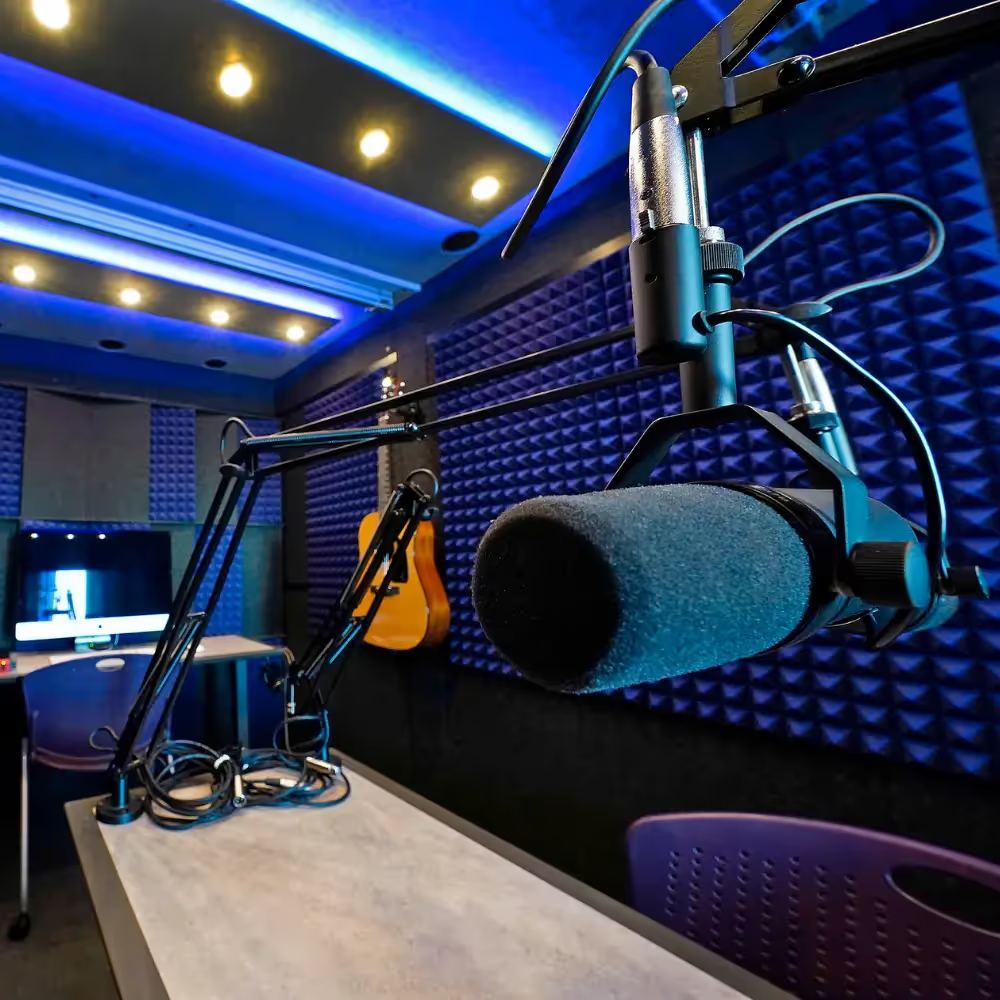
5. Mic Cable
Does the quality of my mic cable affect sound?
Yes. A well-shielded XLR cable prevents unwanted noise and ensures a clean signal from your mic to your interface. While cables may seem like a small detail, they can absolutely impact your recording quality.
Key features to look for:
• Balanced XLR connectors
• Good shielding (to prevent noise)
• Warranty
Popular gear tip: High-quality cables like Mogami Gold Studio XLR are trusted by many professional studios for delivering clean, noise-free audio. Plus, they offer a lifetime warranty.
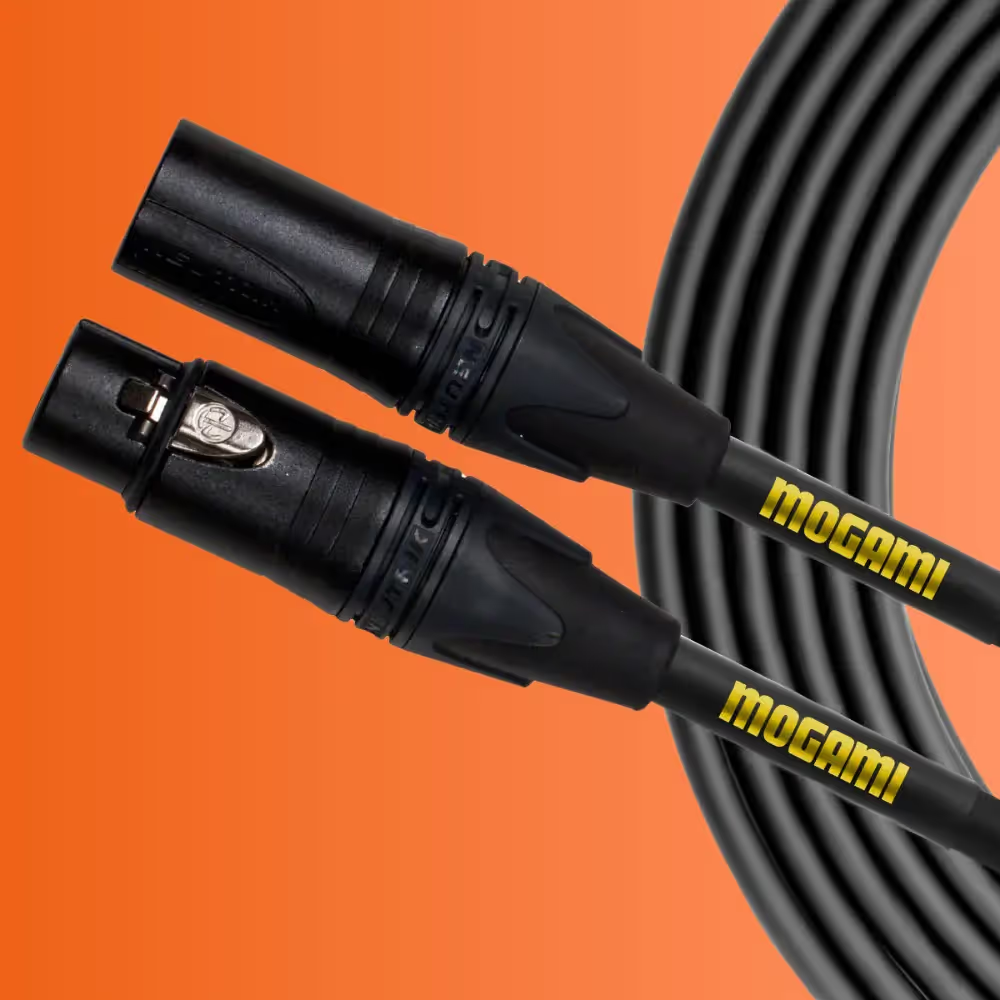
6. Headphones
Why do I need closed-back headphones for recording?
Closed-back headphones allow you to monitor your voice without sound bleeding into the microphone. They help you catch subtle issues in real time, and ensure you’re not introducing unwanted room noise or feedback into your recording.
Key features to look for:
• Closed-back design (prevents bleed)
• Neutral sound
• Comfortable fit
Popular gear tip: Closed-back headphones from Sony, Audio-Technica, and Sennheiser are long-time favorites for voice over monitoring — known for their comfort and clarity.

7. DAW (Digital Audio Workstation)
What software do voice over artists use to record and edit?
A DAW is where you record, edit, and polish your voice over tracks. Most DAWs offer basic tools like noise reduction, EQ, and compression — essential for delivering professional results.
Key features to look for:
• Easy-to-use recording interface
• Basic editing tools
• Built-in processing options (EQ, compression, etc.)
• Runs smoothly on your computer system (check system requirements)
Popular gear tip: Adobe Audition remains an industry standard for VO work, while Reaper is an affordable, highly customizable choice. Pro Tools is commonly used in larger studio workflows. For beginners or those on a budget, free options like Audacity (Windows/Mac) and GarageBand (Mac) can also work well for basic recording and editing.
For more on how to make your vocal tracks sound polished and professional, see our resource: How to Make Clean Vocal Tracks Sound Amazing.
.avif)
FAQs: Voice Over Studio setup
Q: What is the best mic distance for voice over recording?
A: About 6–12 inches from the mic, with a slight angle to reduce plosives.
Q: Do I need an expensive audio interface for VO?
A: Not necessarily — many affordable interfaces (like the Focusrite Scarlett line) deliver excellent quality for most VO work.
Q: What’s the difference between a USB mic and an XLR mic for VO?
A: USB mics are simple and plug directly into your computer. XLR mics (used with an interface) offer higher audio quality and more flexibility — preferred for professional VO.
Q: Should I record voice over standing or sitting?
A: Either can work — standing often helps with breath support and energy, but sitting may be more comfortable for long sessions.
Q: How important is post-processing for voice over?
A: Basic processing (light noise reduction, EQ, and compression) helps your recording sound clean and polished — it’s a key step in most professional VO workflows.
More Resources
Once your WhisperRoom is set up with the right gear, it’s all about refining your recordings and developing your sound. Explore these helpful articles to take your voice over work to the next level:
- Essential Recording Studio Equipment
- Choosing a Microphone for Recording Vocals
- VO Tips from Bill DeWees: 3 Easy Ways to Sound Better — Part One
- VO Tips from Bill DeWees: 5 Ways to Sound Better — Part Two
- VO Tips from Bill DeWees: Professional Audio Quality from Home
Final Note
This list is provided for general reference only. We are not affiliated with or endorsing any specific products or brands. These are simply common choices used by many in the voice over industry. Product selection, setup, and technical support are the responsibility of each individual client.





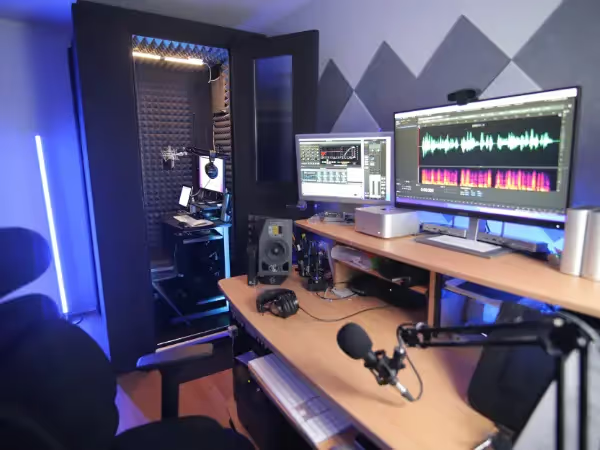


.avif)
.avif)
.avif)

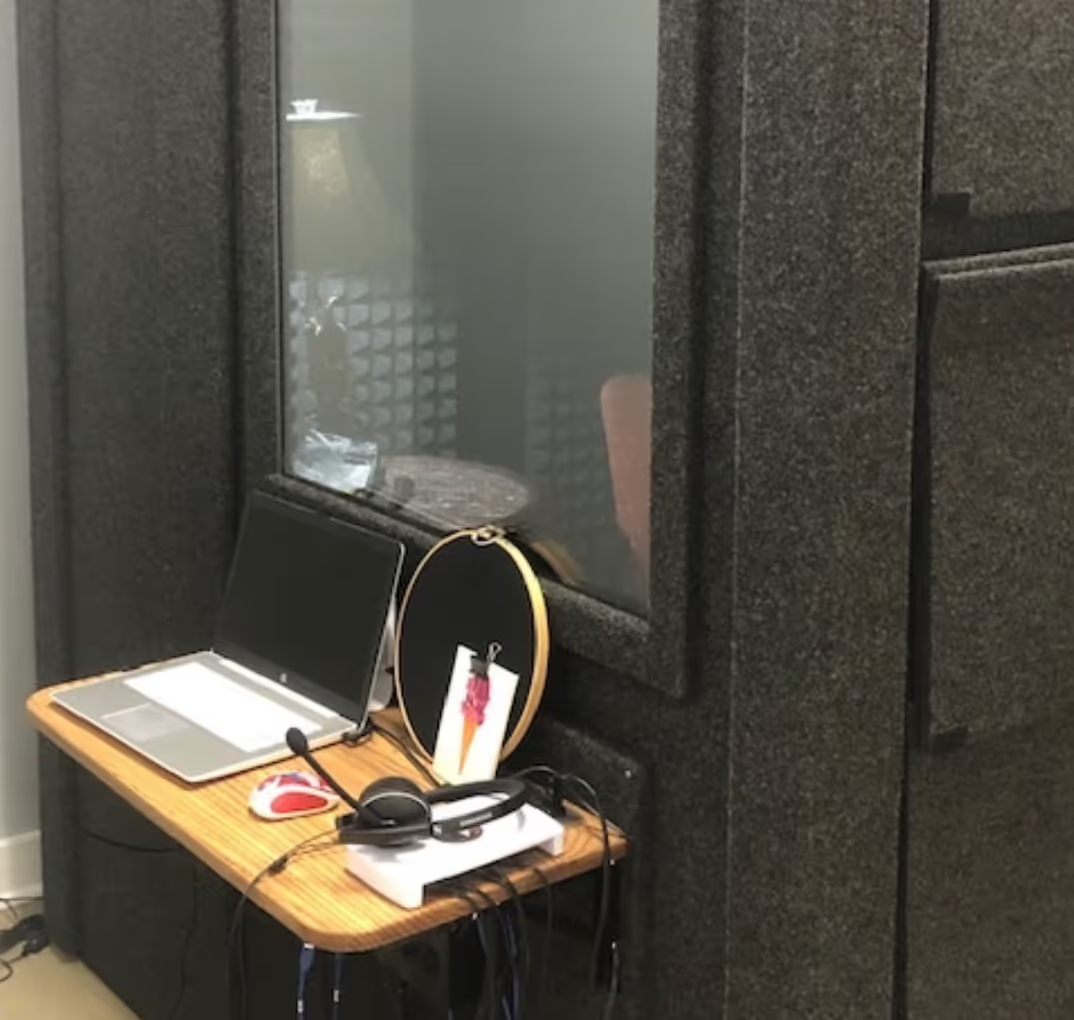
.avif)
.avif)

.avif)
.avif)
.avif)
.avif)
.avif)
.avif)
.avif)
.avif)
.avif)
.avif)
.avif)
.avif)
.avif)
.avif)
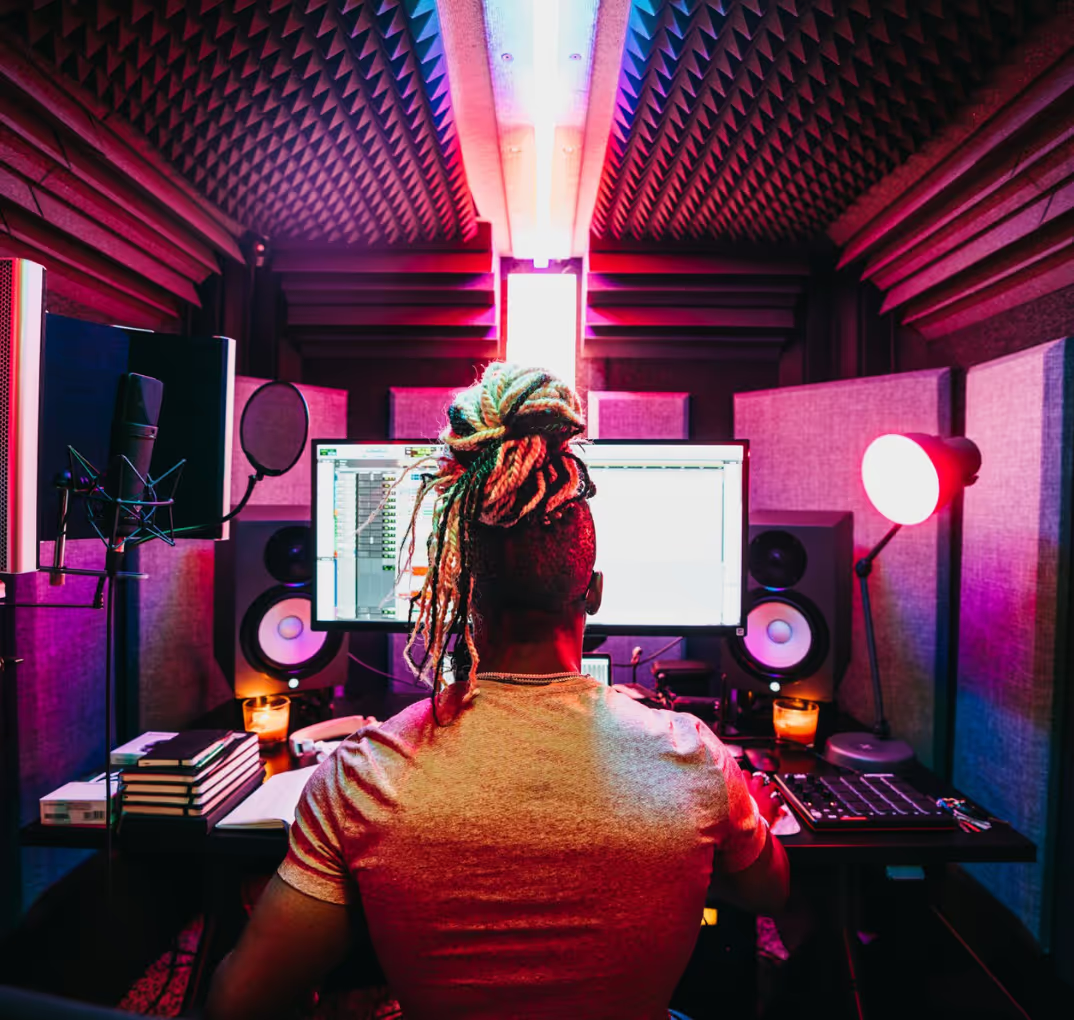
.avif)
.avif)



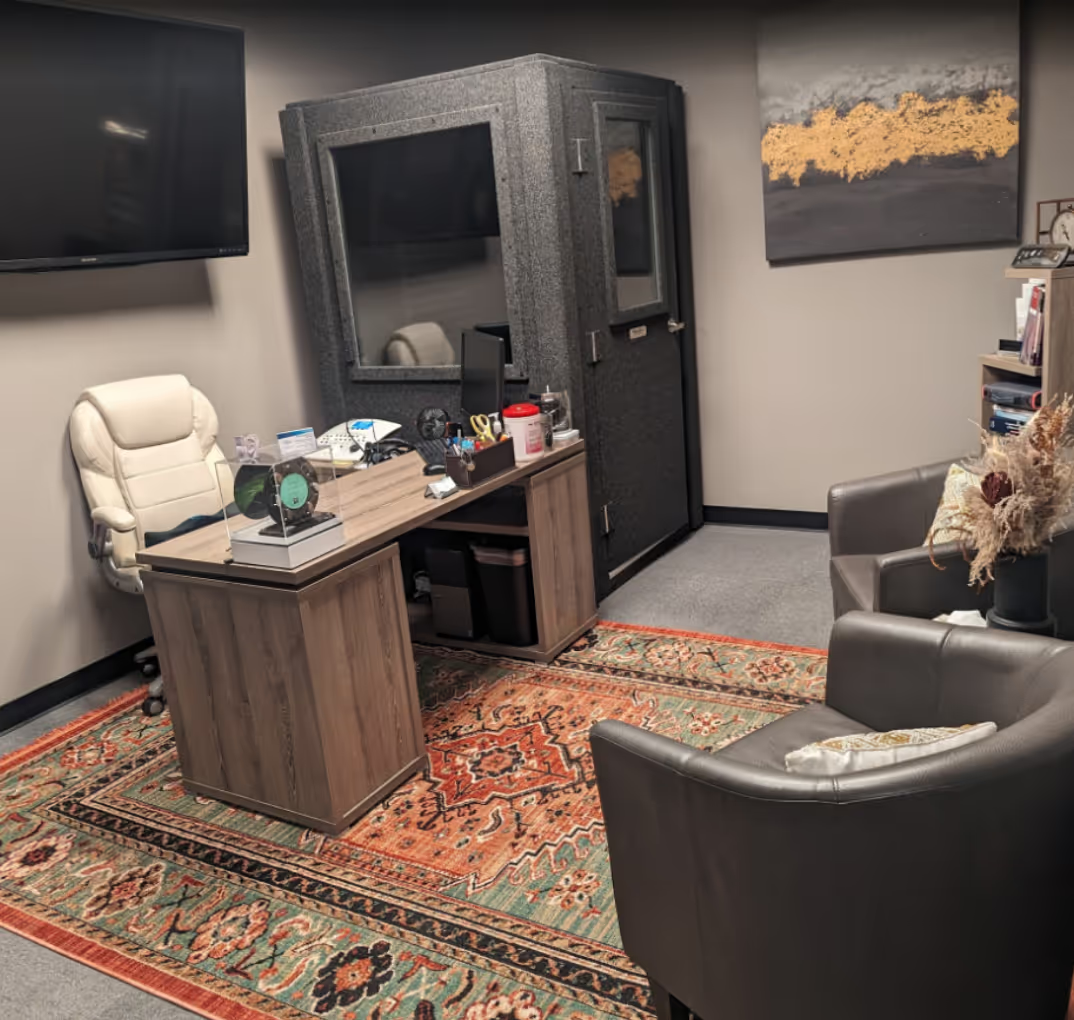


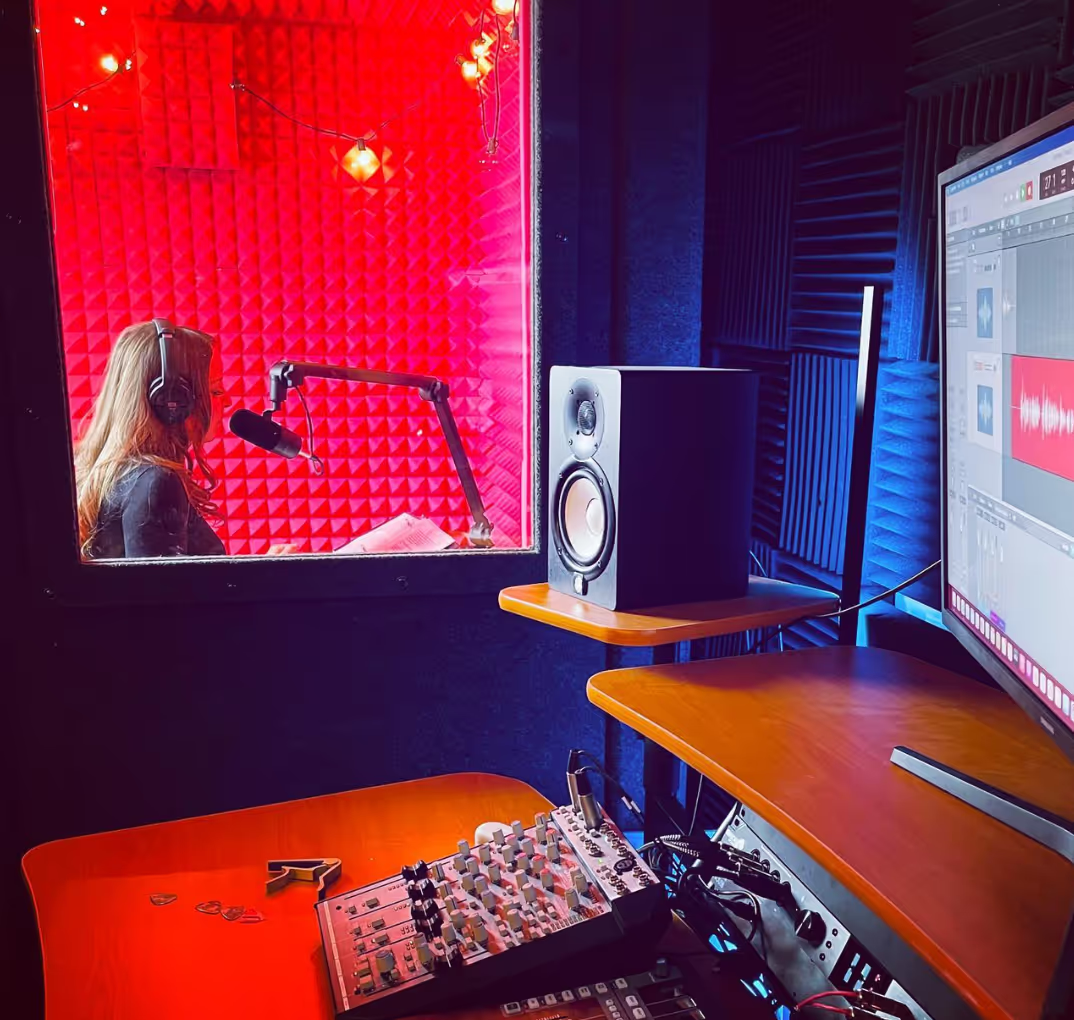
.avif)

